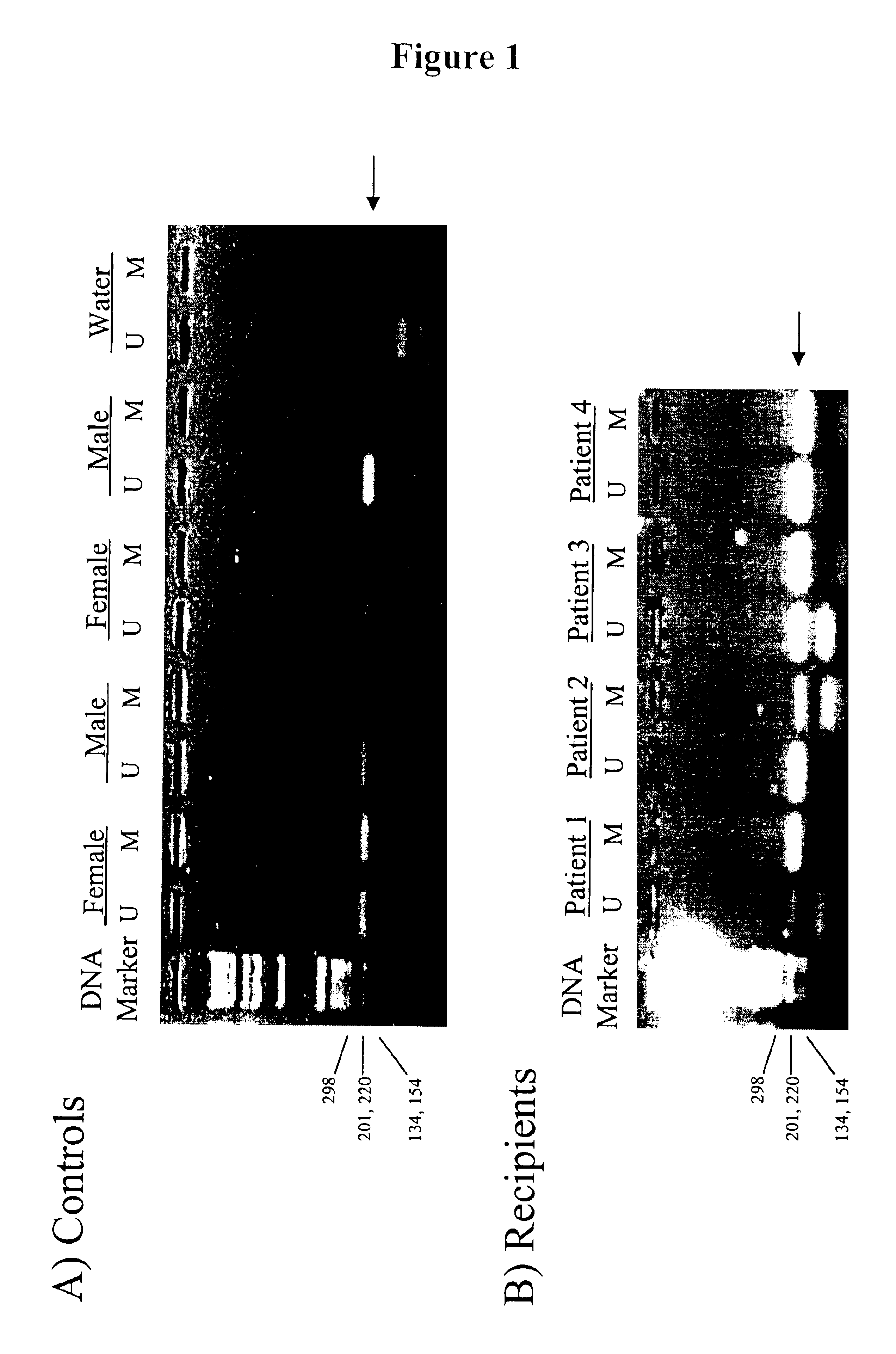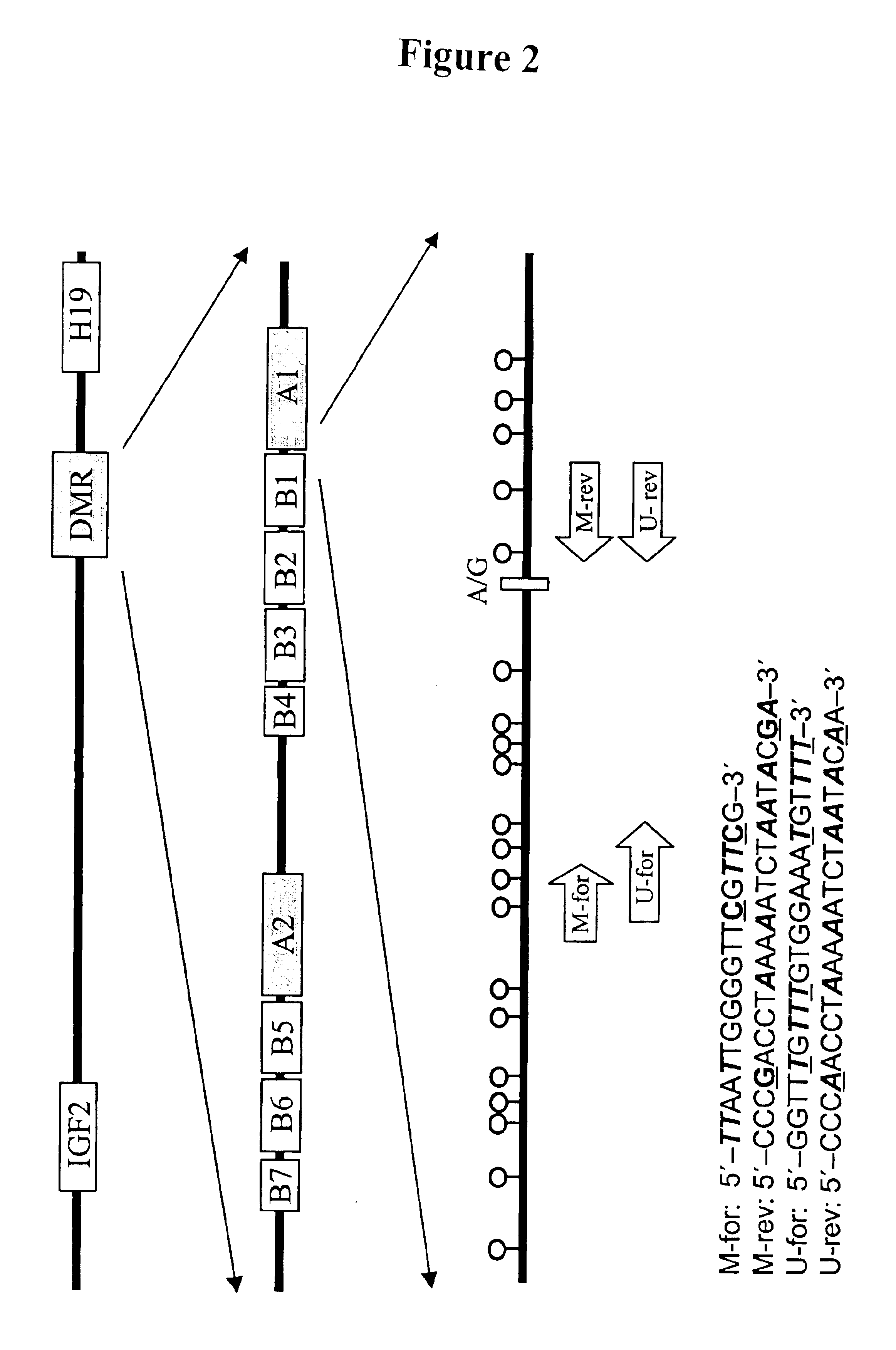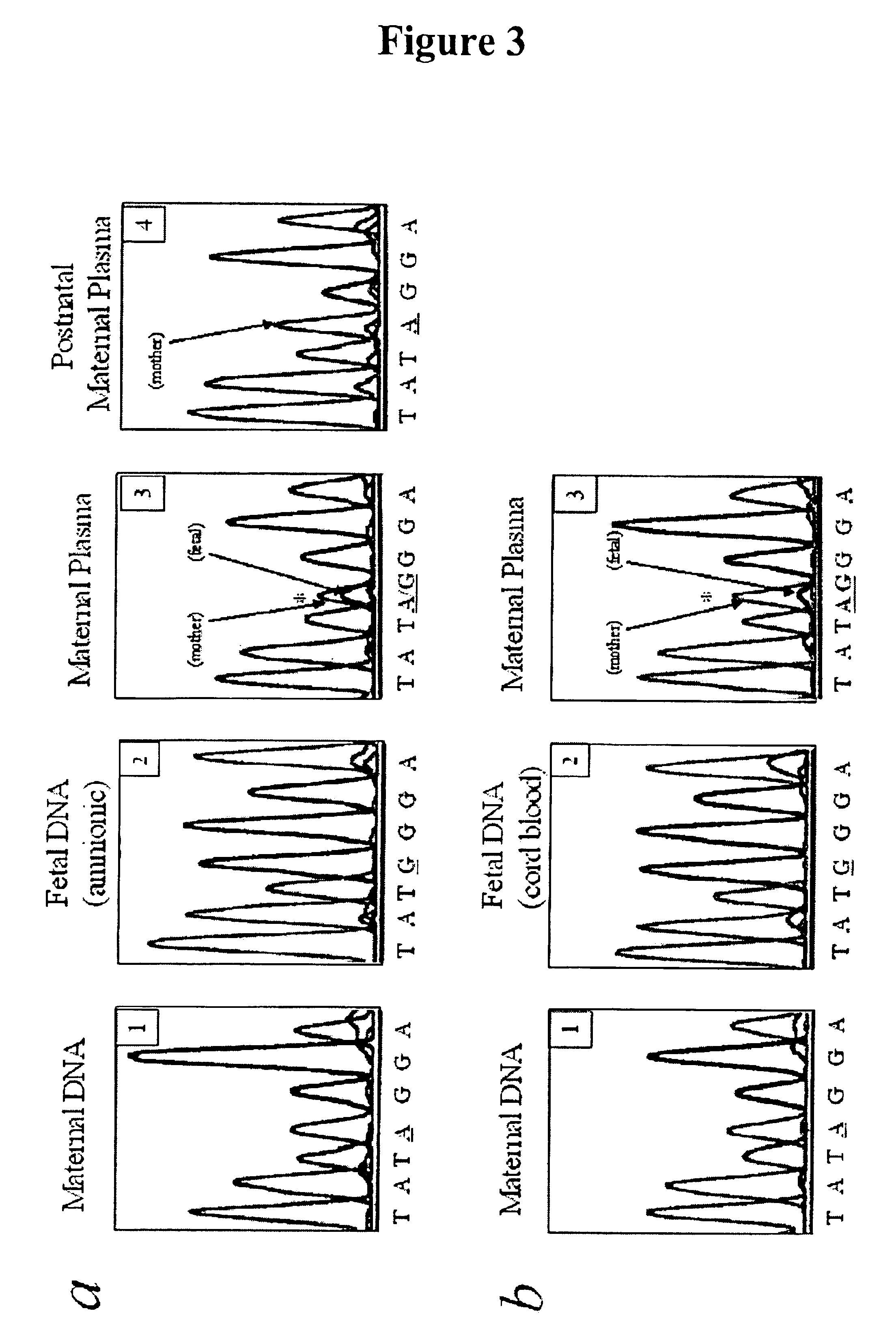Non-invasive methods for detecting non-host DNA in a host using epigenetic differences between the host and non-host DNA
a non-invasive method and dna technology, applied in the field of non-invasive methods for detecting non-host dna in a host using epigenetic differences between the host and non-host dna, can solve the problems of inability to analyze by the current approach, and the inability to detect dna that the fetus has inherited from the mother in maternal plasma or serum,
- Summary
- Abstract
- Description
- Claims
- Application Information
AI Technical Summary
Benefits of technology
Problems solved by technology
Method used
Image
Examples
example 1
[0040]Detection of Post-Bone Marrow Transplantation Chimerism Using a Novel Epigenetic Approach
[0041]Materials and Methods
[0042]Subjects and Samples
[0043]Four male marrow transplantation recipients, who received bone marrow from female donors, and 17 normal healthy subjects were recruited in this study. Buffy coat (BC) from all recruited EDTA-blood samples were harvested and stored at −20° C. as described (Lo et al., Am J Hum Genet 62:768-75 (1998).
[0044]DNA Isolation
[0045]DNA was extracted from the BC using a Nucleon DNA Extraction Kit (Scotlabs) according to manufacturer's recommendations.
[0046]Bisulfite Conversion
[0047]Bisulfite modification of DNA samples was performed using a CpGenome DNA Modification Kit (Intergen) as instructed by the manufacturer. With bisulfite conversion, unmethylated cytosine residues are converted to uracil while methylated cytosine residues remain unchanged (Herman et al., Proc Natl Acad Sci USA 93:9821-6 (1996). The sequence difference between methylat...
example 2
[0054]Differential DNA Methylation Between Fetus and Mother as a Strategy for Detecting Fetal DNA in Maternal Plasma
[0055]The present experiment demonstrates that by using a differentially methylated region in the human IGF2-H19 locus as an epigenetic marker in maternal plasma, detection of an allele that the fetus has inherited from the mother is possible. These results greatly expand the prenatal diagnostic possibilities of fetal DNA in maternal plasma allowing development of a gender- and polymorphism-independent fetal-specific marker in maternal plasma and new strategies for the prenatal diagnosis of imprinting disorders and certain chromosomal aneuploidies.
[0056]Materials and Methods
[0057]Subjects and Samples
[0058]Samples were collected from pregnant women with informed consent. In total, 21 and 18 women in the second trimester (17-21 weeks) and third trimester (37-42 weeks) of pregnancy, respectively, were recruited for this study. None of the recruited subjects had preeclamps...
PUM
| Property | Measurement | Unit |
|---|---|---|
| Concentration | aaaaa | aaaaa |
| Disorder | aaaaa | aaaaa |
Abstract
Description
Claims
Application Information
 Login to View More
Login to View More - R&D
- Intellectual Property
- Life Sciences
- Materials
- Tech Scout
- Unparalleled Data Quality
- Higher Quality Content
- 60% Fewer Hallucinations
Browse by: Latest US Patents, China's latest patents, Technical Efficacy Thesaurus, Application Domain, Technology Topic, Popular Technical Reports.
© 2025 PatSnap. All rights reserved.Legal|Privacy policy|Modern Slavery Act Transparency Statement|Sitemap|About US| Contact US: help@patsnap.com



